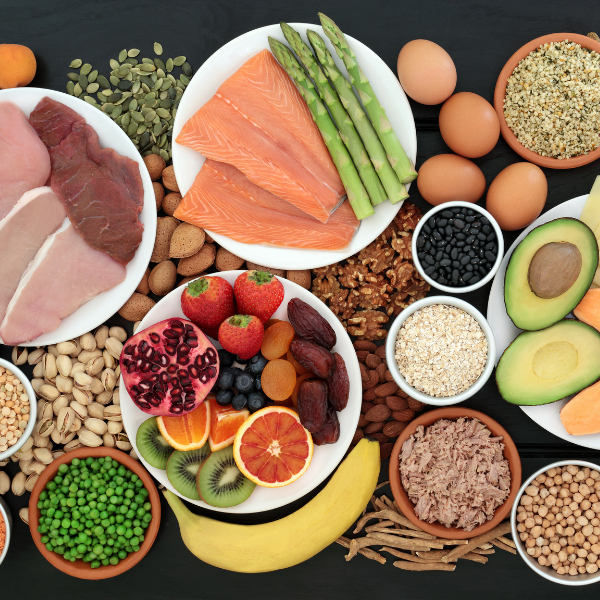The word is out: the plant-based protein revolution is here. When plant-based proteins were first introduced in the food industry, many thought they were limited to vegan, vegetarian consumers, or those with special dietary preferences. However, in recent years, plant-based meals have become very popular regardless of previous eating habits.
Staying healthy and keeping sustainability in mind is a priority for many people in the United States. The meat and dairy industry is known to have a harmful effect on the environment and consumers. Many have made the switch from eating red meat and dairy products regularly in exchange for plant-based foods, seafood, and non-dairy substitutes. The restaurant industry has seen the demand from their customers to include more vegan-friendly options in their menu, and many foodservice establishments, including fast-food chains, have begun incorporating plant-based foods into their menus.
What Are Plant-Based Proteins?

Plant-based proteins are plant foods with high protein content. They are often full of essential nutrients such as fiber, vitamins, and minerals. For those who aren’t used to eating plant-based proteins, you often get the needed levels of protein, vitamins, and minerals from consuming different types of meat. Plant-based diets replace meats with plant-based proteins to receive most of the proteins and nutrients they would be missing from not consuming meats.
Examples of plant-based proteins are:
- Soybean
- Lentil
- Legume
- Chickpeas
- Black beans
- Nuts
- Quinoa
- Tofu
- Tempeh
- Chia seeds
- Oats
- Edamame
- Spirulina
- Almonds
- Whole grains
- Seitan
How Plant-Based Proteins Rose To Popularity
The rise of plant-based protein began in the increasing interest in how eating habits are connected to our general health. Vegan and vegetarian diets are linked to cancer prevention, good gut health, and lowering the risk of heart diseases. Many people who are prone to certain health conditions have begun consuming less meat and more plant-based proteins as a way to take care of themselves.
The Need For Sustainability
Greater awareness of the planet and the increasing need for sustainability also play a role in the rising popularity of plant-based proteins. The concern for the planet’s well-being has taken center stage in recent years, and many people are choosing to get more sustainable in their diets to help combat the decline of the environment. The farming practices used to gather plant-based foods are much more environmentally safe than the farming practices of the meat and dairy industries. The meat and dairy industry produces harmful greenhouse gas emissions and leaves a giant carbon footprint that has contributed to climate change in the past decades.
Advocating For Farm Animals
Consuming less meat and dairy also leads to greater well-being for farm animals. Farm animals are usually subjected to harmful enclosed environments and food production that has led to a decline in their species. Opting for a diet that incorporates more plant foods and less meat is helpful in taking care of animals and livestock.
Popular Amongst Younger Age Groups
Plant-based proteins are especially popular amongst younger generations like millennials, who have a greater understanding of the importance of taking care of the planet and their health. 37% more consumers between the ages of 25-29 seek out plant-based proteins in their meals compared to other age groups, according to QSR magazine.
How To Incorporate Plant-Based Proteins Into Your Menu

Adding plant-based proteins to your menu is easier than you think. In fact, you might be surprised to know your restaurant probably stocks vegan and vegetarian-friendly ingredients already. Take a look at your current menu to figure out where you can add plant-based proteins into your dishes. If you’re looking for inspiration on how to incorporate plant-based proteins into your menu, below are some helpful ideas and suggestions.
Adding Plant-Based Substitutes To Meals
A simple way to add plant-based proteins to your restaurant’s menu is by providing customers with a plant-based substitute for existing meals. Whether your establishment serves breakfast, lunch, dinner, or anything in between, the meat found in your menu items can be easily replaced with a plant-based protein. Choose what kind of plant-based protein you would like to serve at your restaurant and come up with a recipe that would fit perfectly with your existing dishes. Get the word out about your restaurant’s new menu option and offer samples to customers looking to try out new plant-based substitutes in their meal.
Meatless Monday
59% of Americans are already eating meatless at least one day a week, according to Restaurant Business. A ‘Meatless Monday’ promotion at your restaurant is a great way to attract customers who have already cut out meat from their diet during the week. You can create a limited menu that offers plant-based proteins in each dish or add a plant-based protein option to popular menu items that day. Be sure to advertise your new meatless menu promotion to your customers, either at your restaurant or on social media platforms.
Create Plant-Based Dishes
If you’re looking to be inclusive of all kinds of dietary preferences in your menu, adding plant-based dishes to your existing menu is the perfect way to provide customers with plant-based options. Do some research and come up with recipes for 3-5 different menu options that include plant-based proteins. For new customers who enjoy plant-based foods and are looking to try out your restaurant, they’ll be happy to see new options that meet their plant-based needs. For returning customers at your restaurant, adding plant-based dishes to your existing menu gives them the opportunity to try out something new and enticing.
The Benefits Of Adding Plant-Based Proteins To Your Menu

If you’re looking to attract new customers to your restaurant, paying attention to the popularity of plant-based proteins is key. Whether consumers are attracted to plant proteins because of dietary preferences, their health, or their sustainability habits, it's important that your restaurant remains inclusive to plant-based diets. Customers will be delighted to find plant-based options in your menu, and have a greater chance of returning to your restaurant and recommending your establishment to others.
Plant-based proteins are an extremely profitable menu option to have, many restaurateurs have already jumped into using plant-based proteins in their menus. 58 of the biggest restaurant chains in the US have at least one plant-based option on their menu, according to Forbes. To meet the demands of your customers and stay on track with other competitors, consider adding plant-based proteins to your foodservice establishment’s menu.








